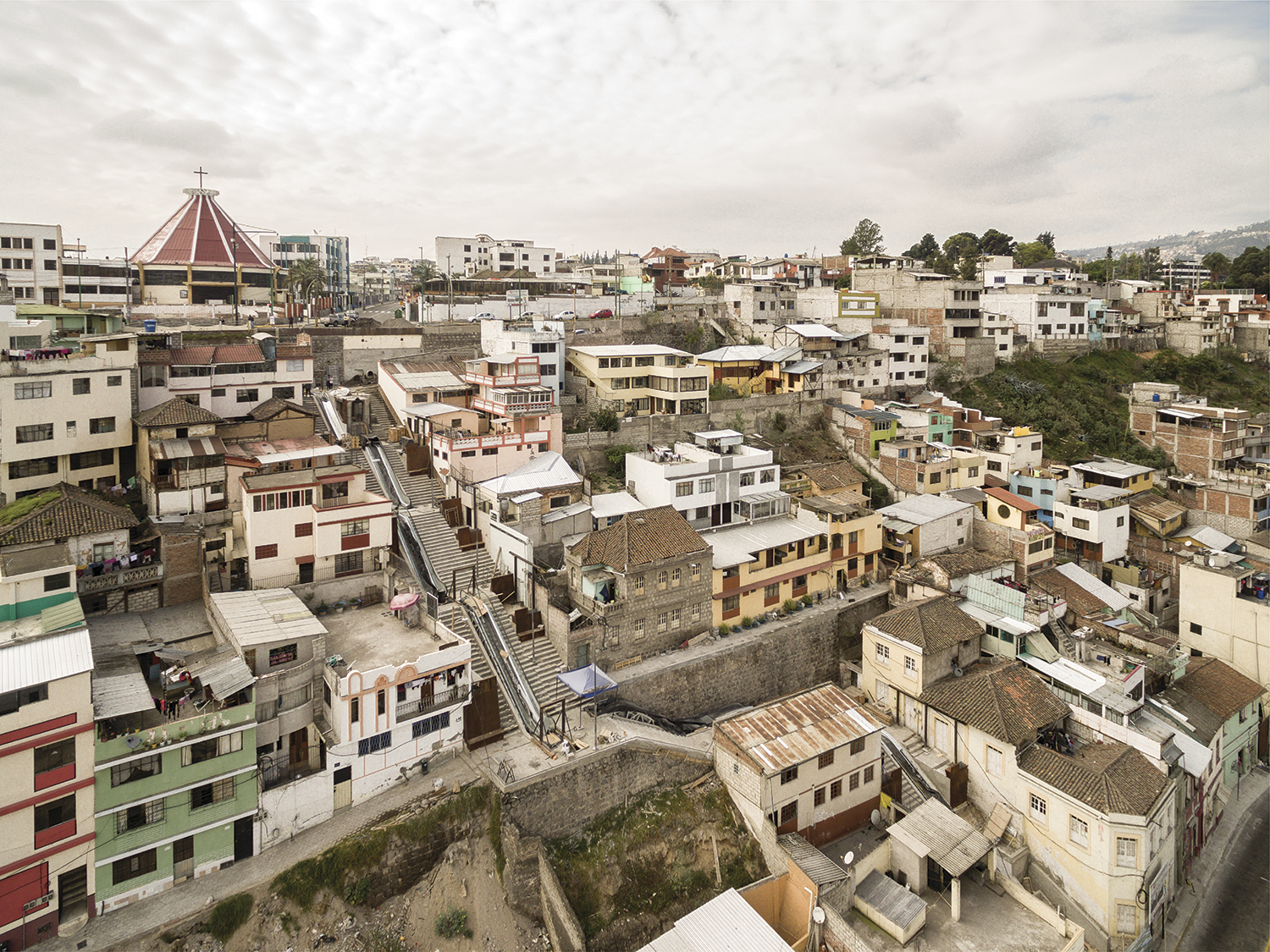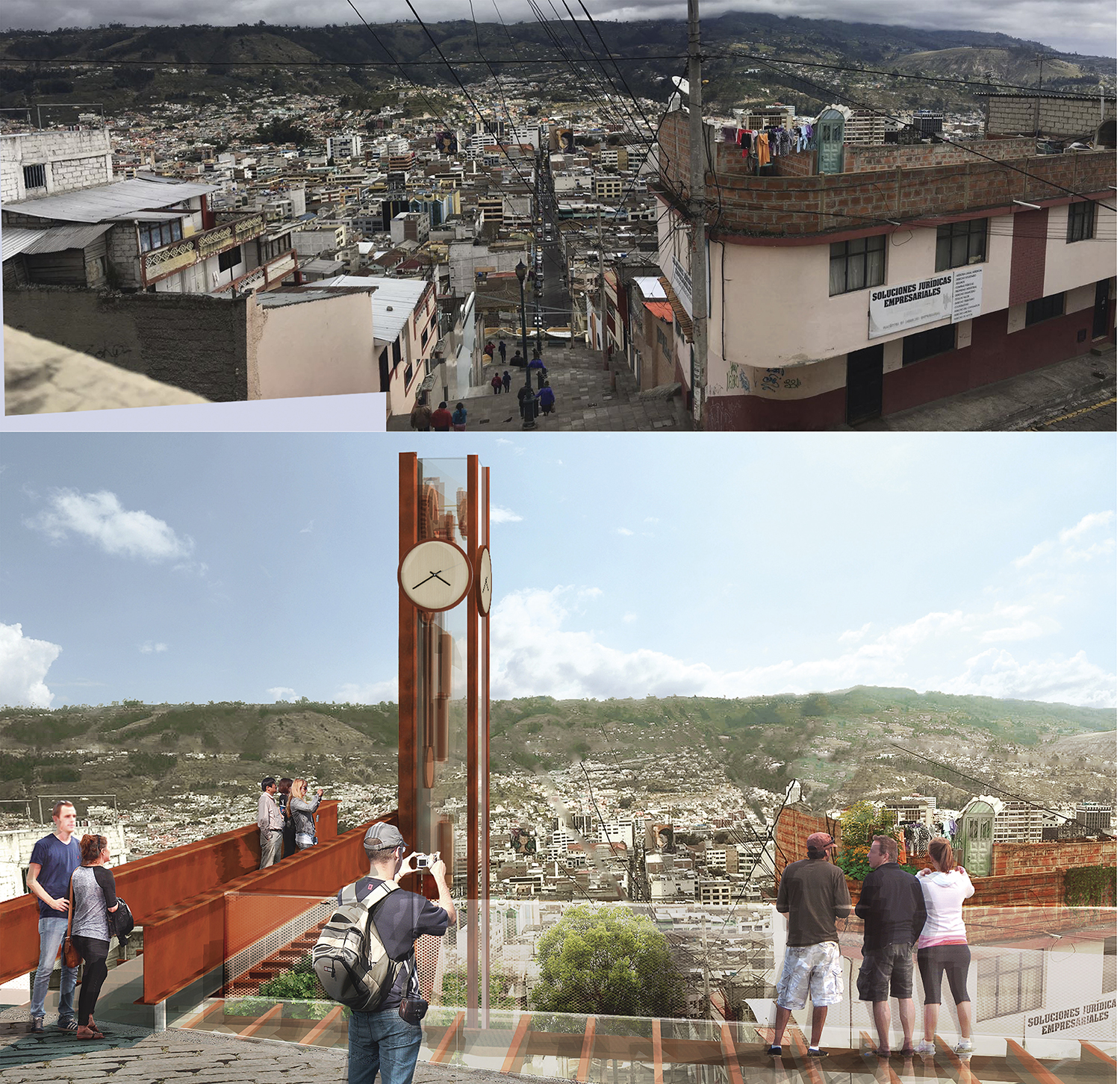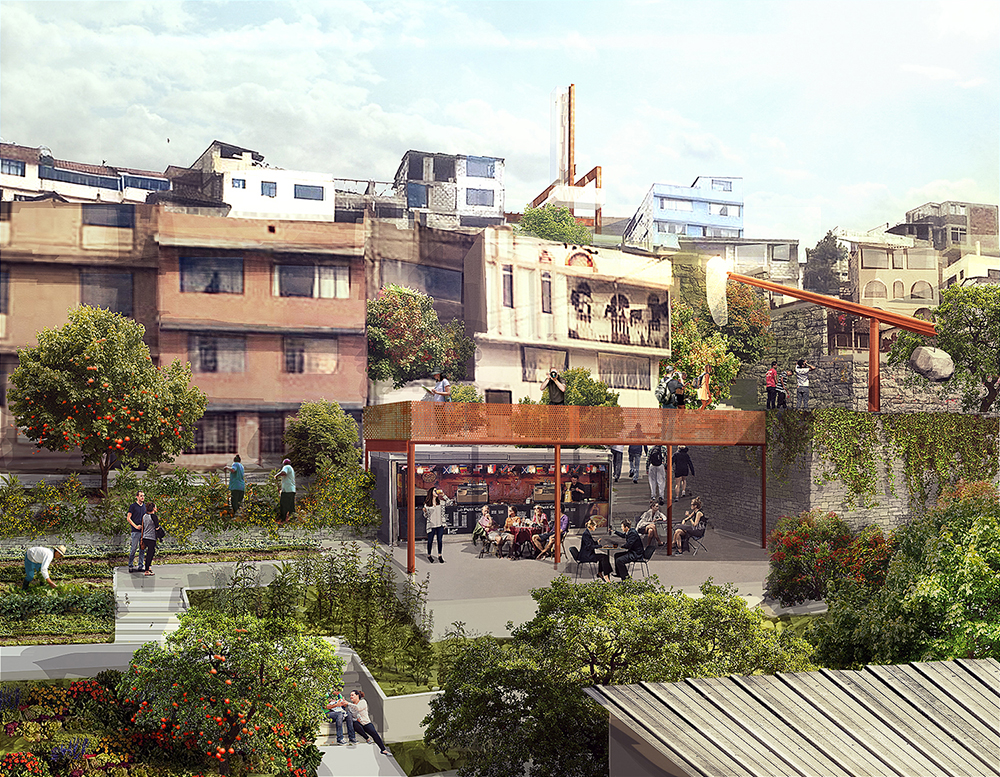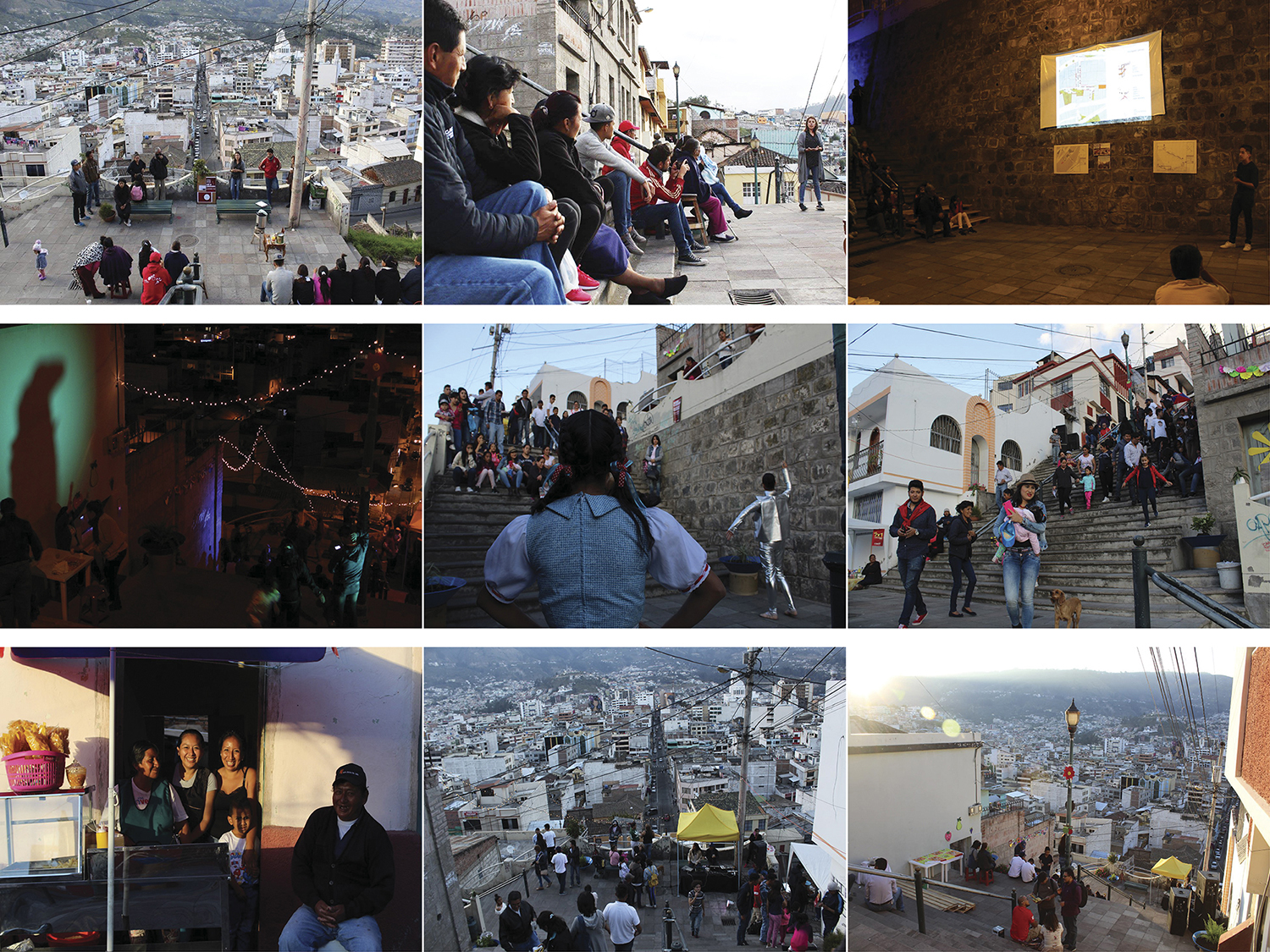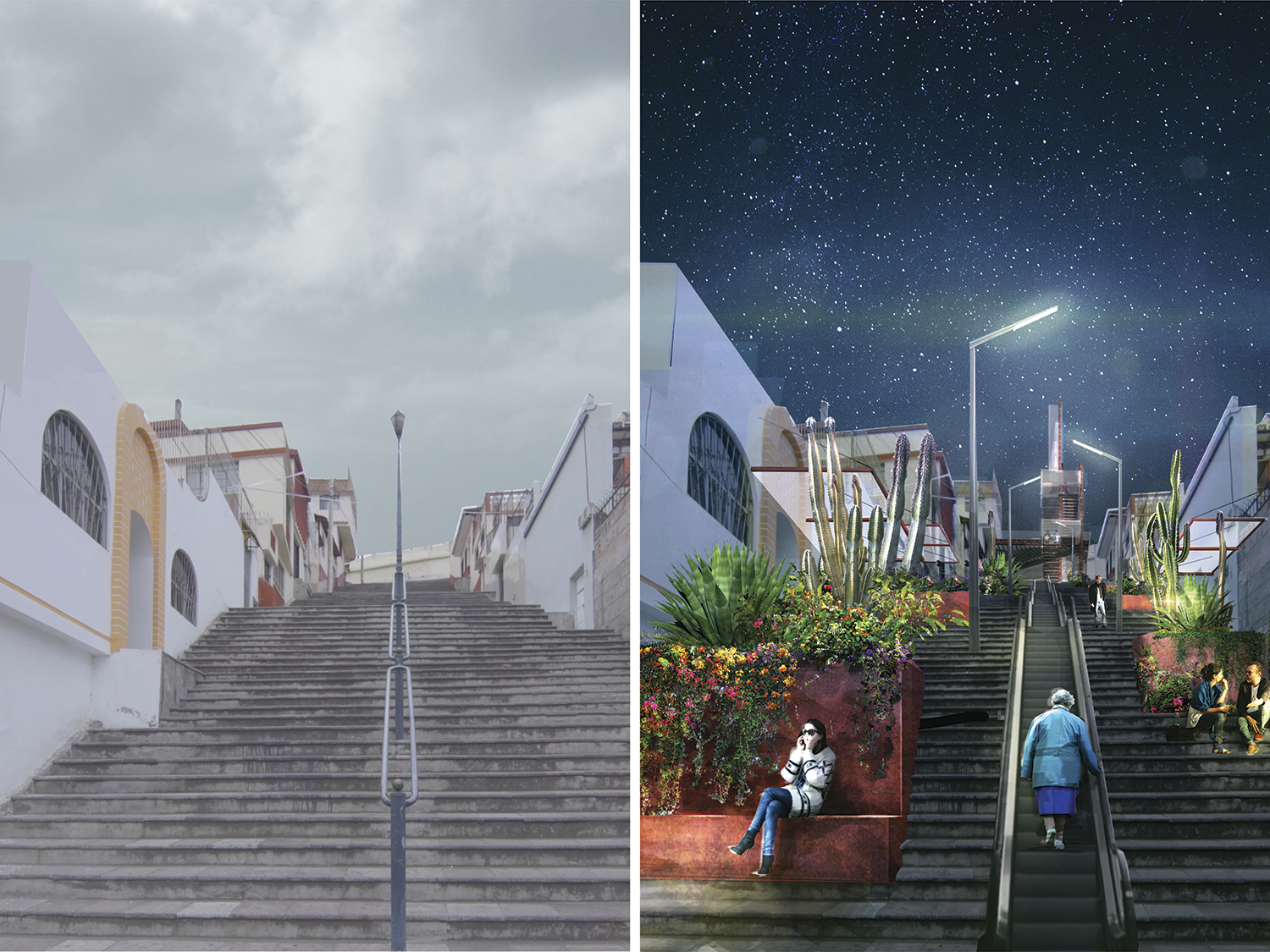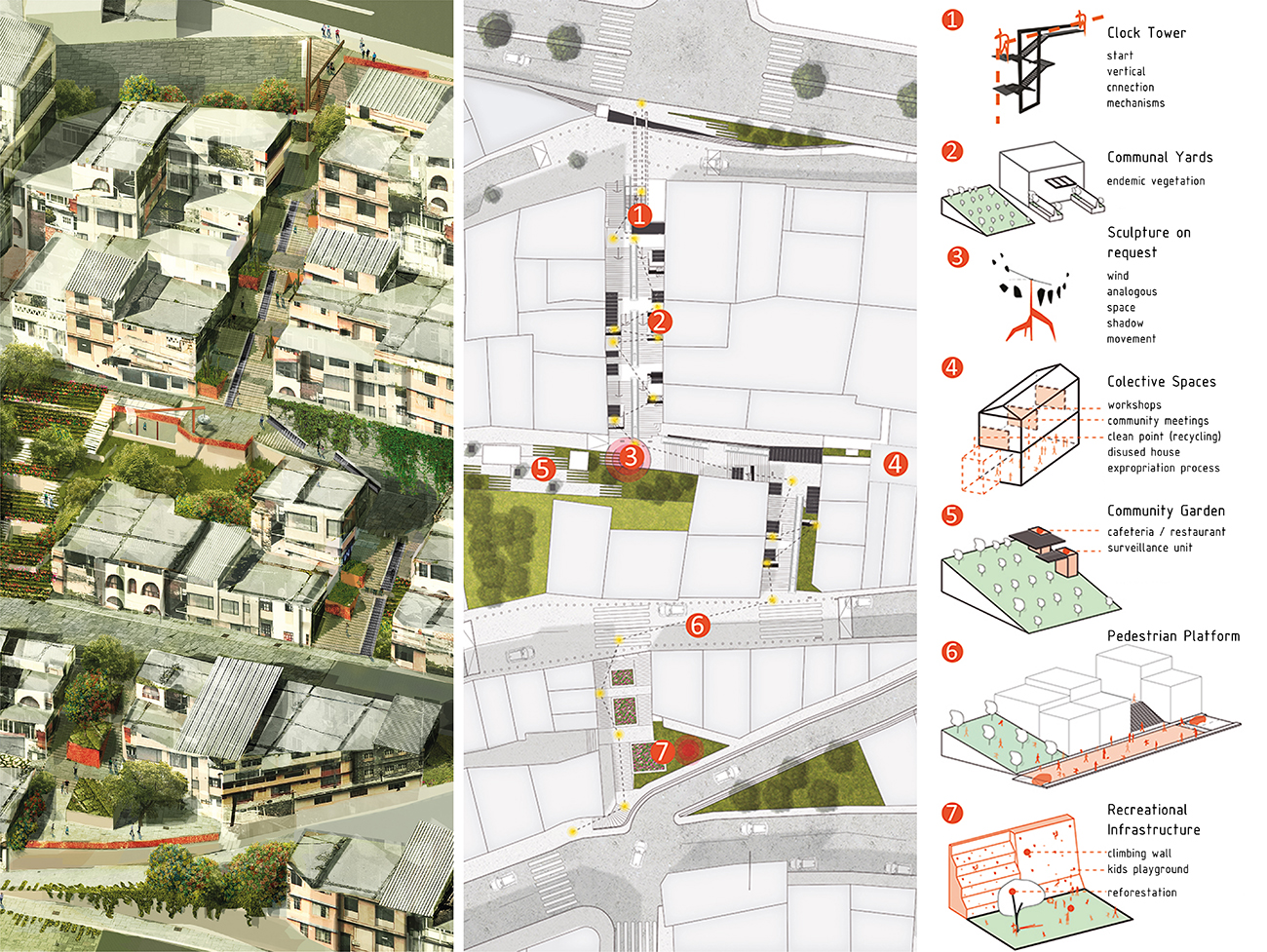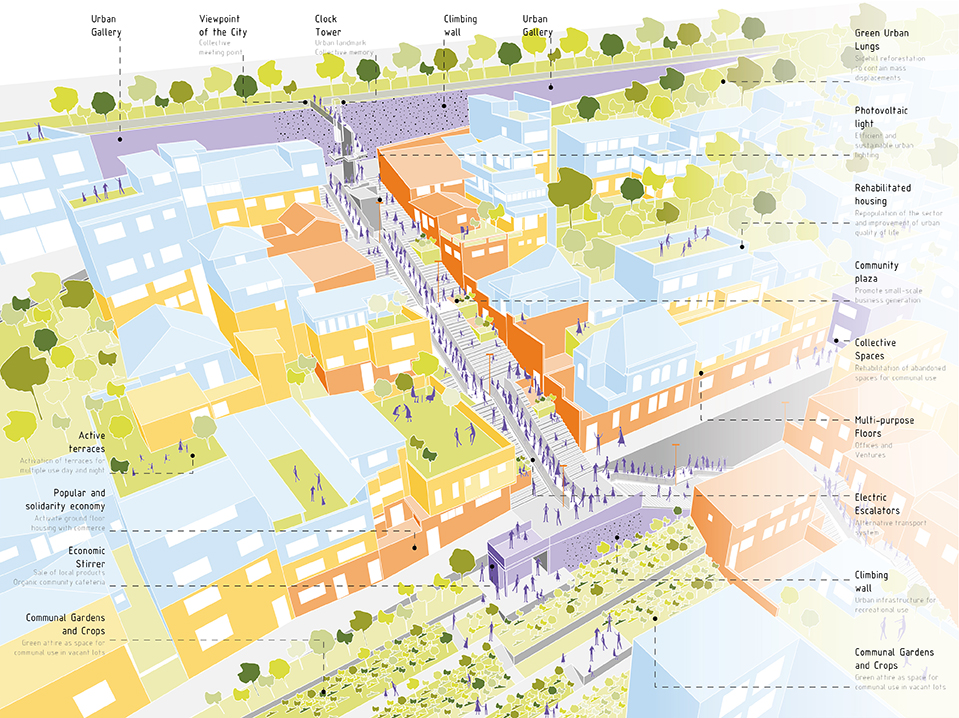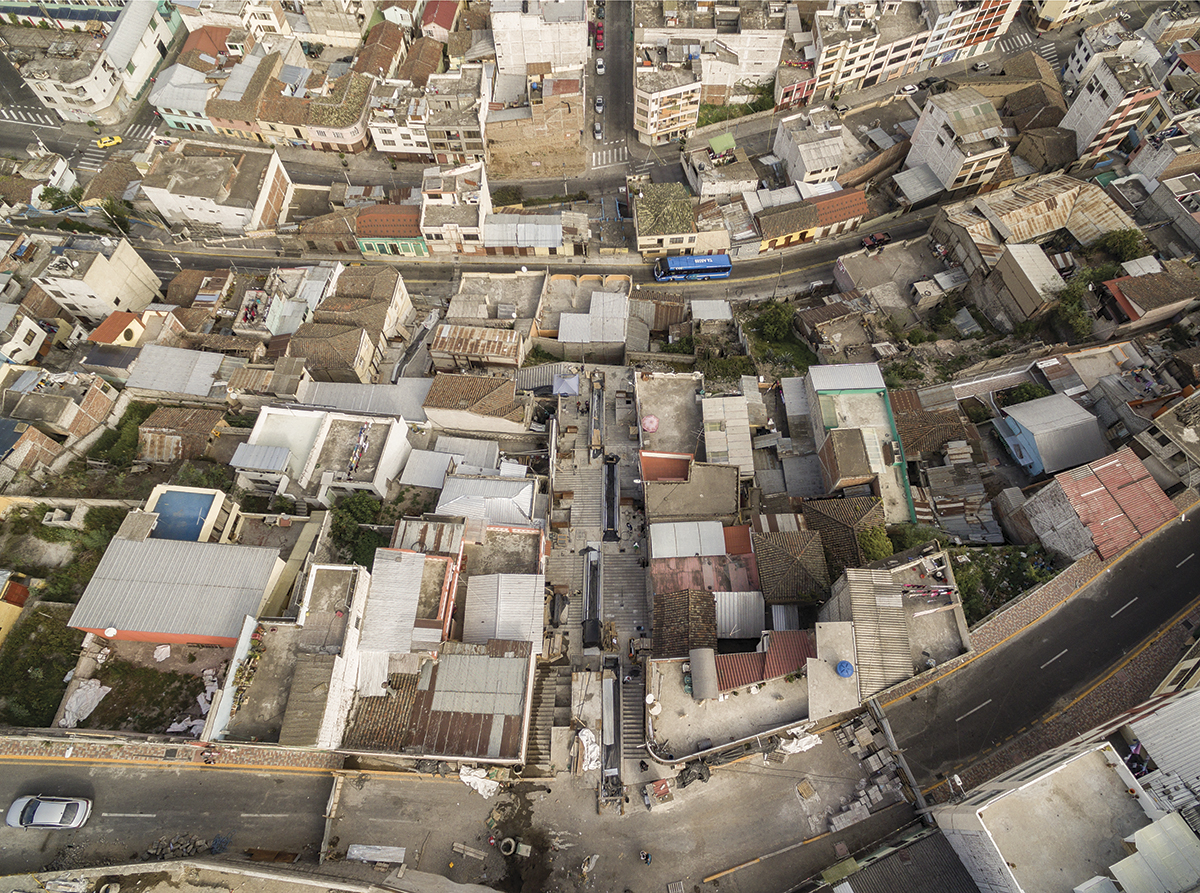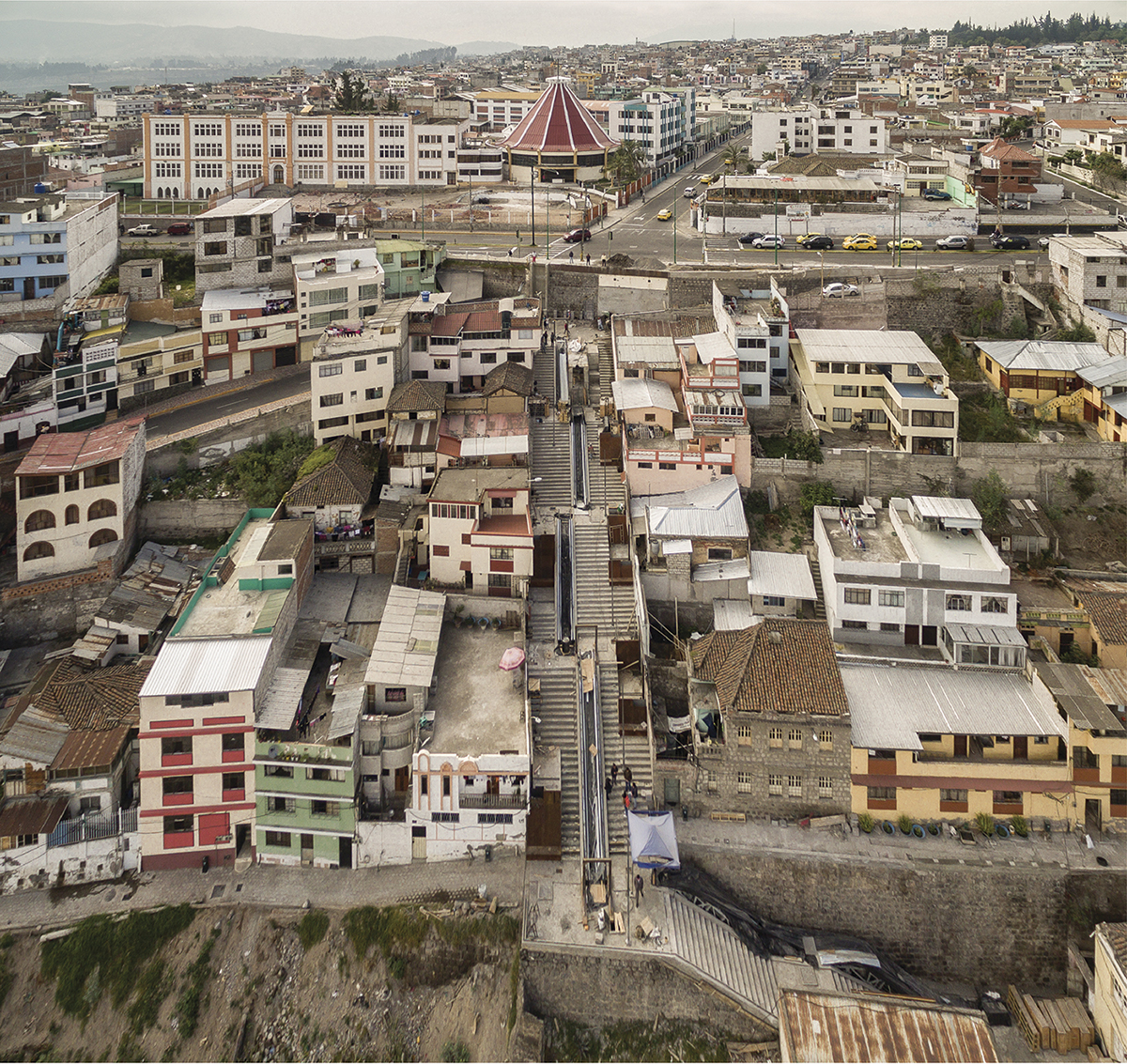Rehabilitation of the Staircases of the Pelileo passage
The project is developed in Ambato-Ecuador. Its geographical condition allowed interconnected some neighborhoods with the down town of the city by stairs. This essential condition in past times was overrun by the use of vehicles and the creation of new ways to facilitate the circulation of cars canceling the pedestrian space. Nowadays this area is abandoned, the neighborhoods close to the staircase faced complex social problems becoming dangerous spots.
The project revalued the hillside neighborhood. Encourage the alternative pedestrian mobility, boost the economy, rescue the green hillside making it productive, strengthen local tourism. The entire project will decrease the use of vehicles which will reduce pollution caused by the combustion of fossil fuels in the city.
The project grows a full system of staircases and recovery of productive spaces on the hillside. Allows a direct connection in a shorter period of time by the use of electric stairs that would help the pedestrian in between long paths. Additionally, the proposal recovers the collective memory of the place re-incorporating symbols as urban objects. The idea developed strategies that could be replicated in order for it to sustain itself in the future so that it can have a bigger impact on the city as an integration of actors, neighbor’s participation, continues use and system of pedestrian mobility. The project impulse and promote to rescue of the vertical public spaces generating a great Urban experiential landmark full of continuous activity for the city.
The project is looking forward to make the hillside as the new green lungs of the city by implement a pedestrian mobility system that reduces the use of vehicle in a 30% less, minimize CO2 emissions and avoid toxicity. The idea has model of green and alive terraces with the intention of generating permeate surfaces to mitigate the greenhouse effect. Empty spots will be converting in a big scale urban crops and gardens made out of low water consumption endemic plants. The new stairs have a self-drain system that collects the rain water in order to water the vegetation. The urban lighting is photovoltaic system taking advantages of the solar energy. In terms of restorations the idea aims to re-use the same pavements and re build houses, with renewables and recyclable materials.


